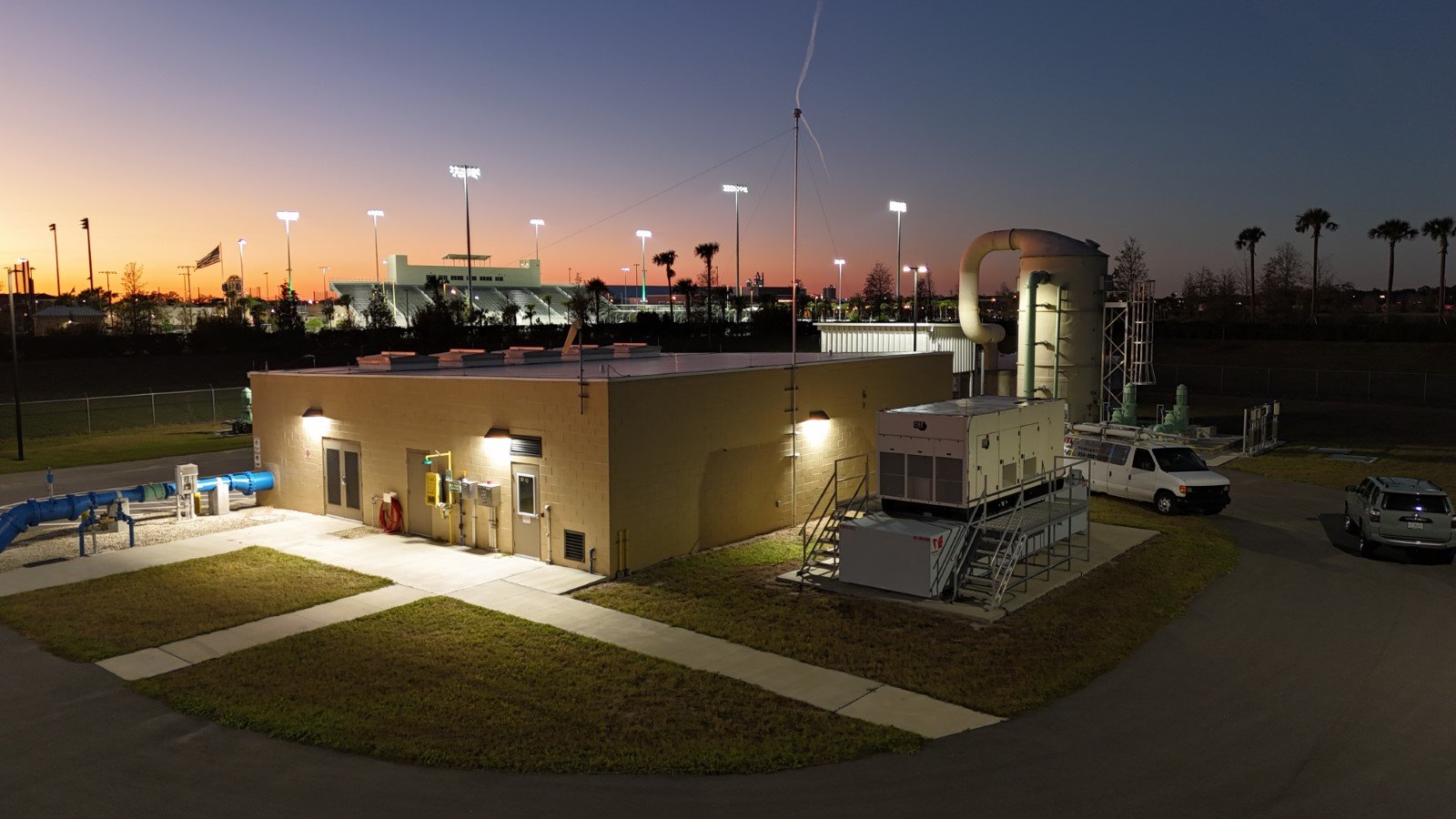Why Traditional Surge Protection Isn’t Enough for Critical Infrastructure
Lightning strikes pose a serious threat to critical infrastructure, from communication towers and power grids to emergency service networks and data centers. A single lightning strike can cause severe electrical surges, damaging essential systems, leading to costly repairs, and even shutting down vital operations. For years, businesses and municipalities have relied on traditional surge protection methods—such as surge suppressors and lightning rods—to mitigate these risks. However, these solutions only address part of the problem, leaving infrastructure vulnerable to direct and indirect lightning damage.
The reality is that traditional surge protection is a reactive approach, meaning it only attempts to manage the damage after a strike has already occurred. But what if there was a way to stop lightning from forming in the first place? That’s where CMCE technology comes in—a groundbreaking, proactive solution that prevents lightning from striking at all. In this article, we’ll explore the limitations of surge protection, the financial and operational risks of lightning damage, and why CMCE is the future of lightning protection for critical infrastructure.
The Limitations of Traditional Surge Protection
How Surge Protectors Work (And Why They Fall Short)
Traditional surge protectors are designed to absorb and redirect high-voltage spikes caused by electrical disturbances, including lightning strikes. There are three primary types:
Type 1: Installed at the main service panel to intercept external surges.
Type 2: Placed within electrical panels to protect internal circuits.
Type 3: Plug-in devices that safeguard specific appliances.
While these systems provide a layer of defense against electrical surges, they do not stop lightning from striking in the first place. If a surge is too powerful, it can overwhelm protection systems, causing damage to low-voltage equipment, data networks, and communication systems.
Why Lightning Rods Aren’t a Full Solution
Lightning rods, also known as air terminals, are another common solution used to protect structures from direct lightning strikes. These metal rods are designed to attract lightning and safely channel the energy into the ground. However, this method has a significant flaw:
It does not prevent lightning from occurring. Instead, it directs the energy away from the structure, but nearby electronics, networks, and sensitive components can still experience surge damage.
It cannot mitigate secondary effects, such as electromagnetic pulses (EMPs) that can disrupt communications and data storage.
For critical infrastructure—such as emergency response centers, hospitals, and telecommunications towers—even a momentary disruption can have catastrophic consequences.
The Cost of Relying on Outdated Protection Methods
Many organizations assume that their existing lightning protection measures are enough—until a lightning strike proves otherwise. According to insurance reports, the average lightning-related claim costs businesses over $25,000, and for high-tech infrastructure, that number can skyrocket into the millions. Beyond financial losses, lightning damage can cause:
Extended downtime for essential services.
Loss of sensitive data or disruption of critical communication networks.
Expensive equipment replacements for electrical and electronic systems.
In short, traditional methods are no longer sufficient for protecting the sensitive technology that powers modern infrastructure.
How CMCE Technology Provides Complete Protection
The Science Behind CMCE: Stopping Lightning Before It Forms
Unlike surge protectors or lightning rods, CMCE (Multiple Electric Field Compensator) technology takes a proactive approach to lightning protection. Instead of waiting for a strike, CMCE devices prevent the formation of lightning altogether.
CMCE works by:
Absorbing and neutralizing excess electric charges in the surrounding electromagnetic field.
Maintaining an electrically balanced environment, which prevents the conditions necessary for lightning to develop.
Safely dissipating charges into the ground, eliminating the risk of upward streamers—the precursors to lightning strikes.
By eliminating the root cause of lightning formation, CMCE devices protect critical infrastructure without needing to redirect dangerous electrical energy, making them a revolutionary advancement in lightning protection.
Why CMCE is a Game-Changer for Critical Infrastructure
CMCE technology offers unmatched advantages over traditional lightning protection:
Stops lightning before it strikes—not just mitigating damage, but preventing it.
Protects both high and low-voltage systems, ensuring sensitive electronics remain safe.
Reduces maintenance and repair costs, leading to long-term savings.
Prevents downtime for essential services, keeping operations running smoothly.
Industries like telecommunications, emergency services, aviation, and energy production are already adopting CMCE solutions to protect their most valuable assets.
Why Businesses Need to Upgrade Their Protection Now
The Rising Risks of Lightning and EMP Events
Severe weather patterns are becoming more frequent, and with that comes an increase in lightning activity. At the same time, the growing use of electronic and digital infrastructure means that the impact of lightning damage is more severe than ever before.
Climate change is increasing the frequency and intensity of thunderstorms, leading to more frequent lightning strikes worldwide.
Electromagnetic pulses (EMPs), both natural and man-made, pose a serious risk to electronic infrastructure.
Data centers, communication networks, and emergency systems rely on uninterrupted operation, making proactive protection essential.
For organizations that rely on uninterrupted operations, waiting until damage occurs is not an option.
Investing in CMCE: A Smart Financial and Safety Decision
Many businesses and municipalities view lightning protection as an expense—but in reality, it’s an investment.
Consider the costs of not upgrading protection:
Equipment replacement costs: $50,000+ per incident
Operational downtime losses: $10,000–$100,000 per hour (depending on the industry)
Insurance claims and increased premiums: Thousands of dollars per year
CMCE protection eliminates these risks, providing long-term cost savings and complete lightning prevention.
The Future of Lightning Protection is Here
Traditional surge protection methods have served their purpose, but as technology evolves and infrastructure becomes more vulnerable, a more advanced approach is needed. CMCE technology isn’t just another layer of defense—it’s a game-changing innovation that prevents lightning from striking at all.
For businesses, municipalities, and industries that depend on critical infrastructure, investing in CMCE means investing in security, reliability, and long-term cost savings.
Don’t wait for the next storm—upgrade your lightning protection today.


